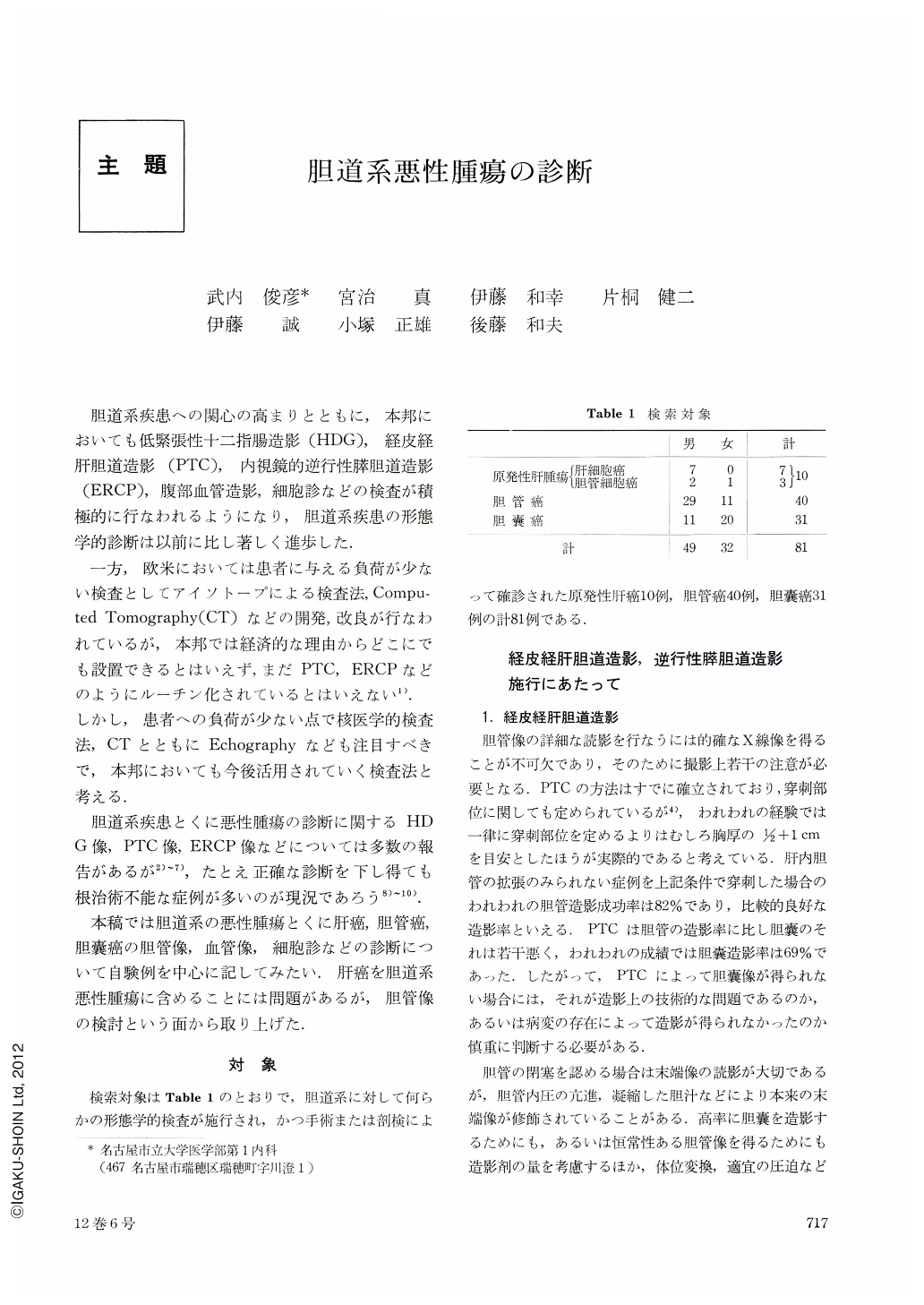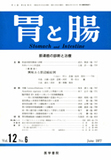Japanese
English
- 有料閲覧
- Abstract 文献概要
- 1ページ目 Look Inside
胆道系疾患への関心の高まりとともに,本邦においても低緊張性十二指腸造影(HDG),経皮経肝胆道造影(PTC),内視鏡的逆行性膵胆道造影(ERCP),腹部血管造影,細胞診などの検査が積極的に行なわれるようになり,胆道系疾患の形態学的診断は以前に比し著しく進歩した.
一方,欧米においては患者に与える負荷が少ない検査としてアイソトープによる検査法,Computed Tomography(CT)などの開発,改良が行なわれているが,本邦では経済的な理由からどこにでも設置できるとはいえず,まだPTC,ERCPなどのようにルーチン化されているとはいえない1).しかし,患者への負荷が少ない点で核医学的検査法,CTとともにEchographyなども注目すべきで,本邦においても今後活用されていく検査法と考える.
In this review, the X-ray findings obtained by PTC (Percutaneous transhepatic cholangiography) or ERCP (endoscopic retrograde cholangiopancreatography) and the role of cytology in intrahepatic bile and duodenal juice are discussed. The cases of biliary tract neoplasms consisted of 10 cases of primary liver cancer, 41 cases of cancer of the bile duct and 30 cases of cancer of the gallbladder, and these diagnoses were confirmed by operation or necropsy.
The X-ray findings of the intrahepatic biliary tree could be divided into two types in cases of liver cell carcinoma. In one type, smooth narrow intrahepatic bile ducts were without irregularity or filling defects, and deviation, compression, and stretching were not always manifested. Partial tortuosities, irregularities and filling defects of the duct were demonstrable in the other type. The X-ray findings in cases of intrahepatic bile duct cell carcinoma were more striking than those of liver cell carcinoma, particularly regarding irregularity of the ducts.
In cancer of the bile duct, complete obstruction of the extrahepatic bile ducts developed in 76 per-cent of the cases with the site of obstruction more common proximally, gradually decreasing in number in the central and distal portions. The obstruction on the liver side had the spape of an U or V in 86 per-cent with irregularity in 61 per-cent. The obstruction on the duodenal side had the shape of an inverted U or V in 9 of 10 cases, with irregularity in six of the nine cases. The liver and duodenal sides of the obstruction were asymmetric in appearance.
In the cancer of the gallbladder, incomplete obstruction of extrahepatic bile ducts was present in 35 per-cent and no obstruction was observed in 35 per-cent. The incidence of complete obstruction in cancer of the gallbladder differed from that in cancer of the bile duct. Right sided compression of extrahepatic bile ducts was found in 56 per-cent of cases of cancer of the gallbladder. The gallbladder was visualized by PTC or ERCP in only 4 of 26 cases and the cystic duct in six cases.
Examination of exfoliative cytology from the intrahepatic bile aspirated at the time of PTC gave positive results in 64 per-cent of bile duct cancers and in 80 per-cent of gallbladder cancers. Cytology of duodenal juice aspirated at the time of hypotonic duodenography was positive in two of eight cases of bile duct cancer and one of two cases of gallbladder cancer.
From these results we have concluded that the diagnosis of biliary tract neoplasms would be accurate if features of the distal and proximal ends of the obstructive site are opacified by PTC combined with ERCP. Careful observation of intravenous of oral cholecystograms may possibly result in yet earlier detection of biliary tract cancers.
Cytology of biliary tract neoplasms contributes to their qualiative diagnosis and should be performed as a routine examination in patients suspected of having such lesions.

Copyright © 1977, Igaku-Shoin Ltd. All rights reserved.


